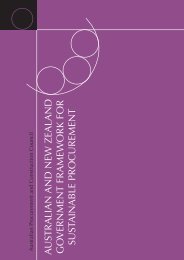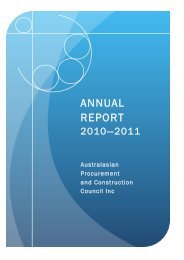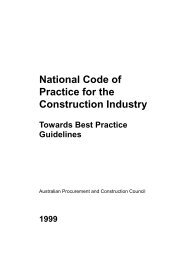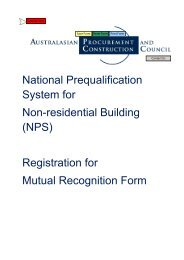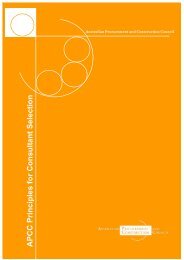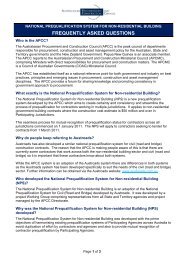Improving Security of Payment Building and Construction Industry
Improving Security of Payment Building and Construction Industry
Improving Security of Payment Building and Construction Industry
- No tags were found...
You also want an ePaper? Increase the reach of your titles
YUMPU automatically turns print PDFs into web optimized ePapers that Google loves.
5. Pro<strong>of</strong> <strong>of</strong> <strong>Payment</strong> Page 78National Public Works Council Inc<strong>Improving</strong> <strong>Security</strong> <strong>of</strong> <strong>Payment</strong> in the <strong>Building</strong> <strong>and</strong> <strong>Construction</strong> <strong>Industry</strong>From a legal perspective, a legislative requirement that disputes be referred toalternative dispute resolution as well as providing for the framework within whichthe dispute resolution is to be conducted, would be preferable in some, but notnecessarily all cases. The problem with legislation is that it may impose aninflexible regime under which a dispute in a building contract must be solved, whichmay not be the most appropriate solution for the particular dispute. For example, asmall project with a relatively simple dispute <strong>and</strong> one in which there are not manyother Subcontractors down the chain awaiting the outcome before they are paid, maynot be an appropriate situation for an inflexible alternative dispute resolution format.On the other h<strong>and</strong>, a large scale project would probably be well suited to a stricterlegislative framework.In any event, the availability <strong>of</strong> an alternative dispute resolution process is betterthan only having an adversarial approach available to dispute resolution.5.8.10 Possible industry resistance <strong>and</strong> identify source <strong>of</strong> resistanceThis issue, again a broad one, can be answered by reference to industry response tothe use <strong>of</strong> alternative dispute resolution in the case <strong>of</strong> disputes under either <strong>of</strong> thetwo pro<strong>of</strong> <strong>of</strong> payment models.The report from the CIDA National Conference suggests that, at least inQueensl<strong>and</strong>, a legislative response to the pro<strong>of</strong> <strong>of</strong> payment issue as a whole is notdesired, but that industry initiatives are preferred.The Australian Constructors Association states that it favours "m<strong>and</strong>atory use <strong>of</strong>alternative dispute resolution..". Whether "m<strong>and</strong>atory" means that the process isrequired by Legislation or is contractually required, is unclear. It certainly appearsthat the use per se <strong>of</strong> alternative dispute resolution is favoured.Similarly, the Metal Trades <strong>Industry</strong> Association/National <strong>Construction</strong> Council("MTIA/NCC") support the incorporation <strong>of</strong> alternative dispute resolution as am<strong>and</strong>atory requirement in all building contracts. The MTIA notes that this is to becontrasted with the current situation where alternative dispute resolution is simplyincorporated with a reference to "best endeavour" clauses. Thus, it is not clearwhether legislation is envisaged as a means <strong>of</strong> incorporating alternative disputeresolution into the dispute process or not.Recommendation 25 <strong>of</strong> the CIDA Board endorses the incorporation <strong>of</strong> alternativedispute resolution mechanisms into all contracts.It would seem that if there is any resistance to alternative dispute resolution, propereducation programs are needed to be put in place to overcome this barrier. Whetheralternative dispute resolution is effective will to some extent be dependent upon theparty's perception <strong>of</strong> the effectiveness <strong>of</strong> the mediator/ arbitrator/conciliator beinginvolved in the process. If the parties are happy with these people <strong>and</strong> have faith intheir ability to settle disputes, then the <strong>Building</strong> <strong>and</strong> <strong>Construction</strong> <strong>Industry</strong> shouldshow less resistance to adopting an alternative dispute resolution mechanism to


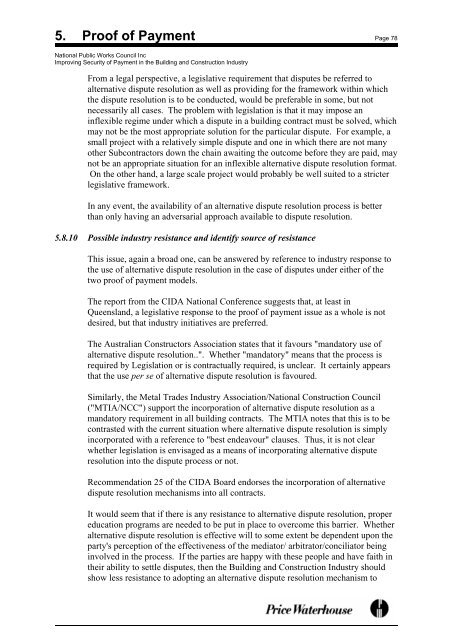
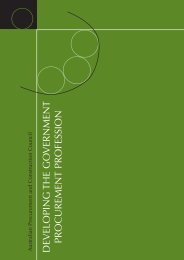
![NATIONAL COST ADJUSTMENT PROVISION EDITION 2 [NCAP2]](https://img.yumpu.com/48266135/1/184x260/national-cost-adjustment-provision-edition-2-ncap2.jpg?quality=85)

